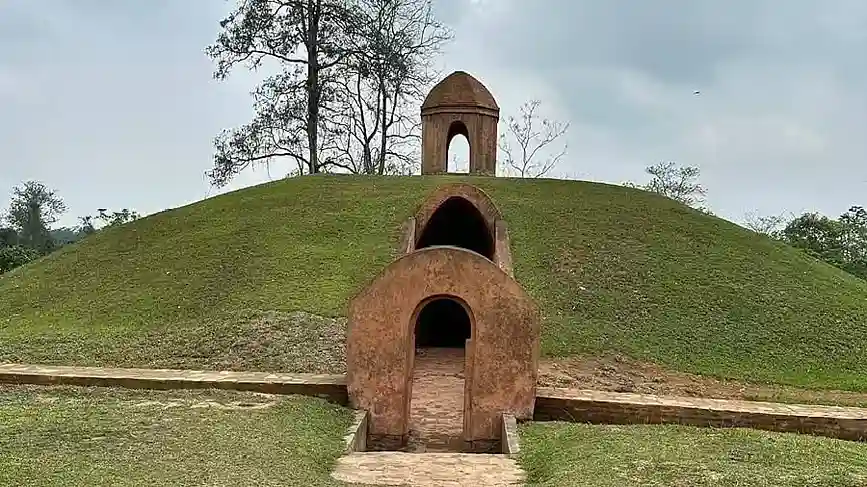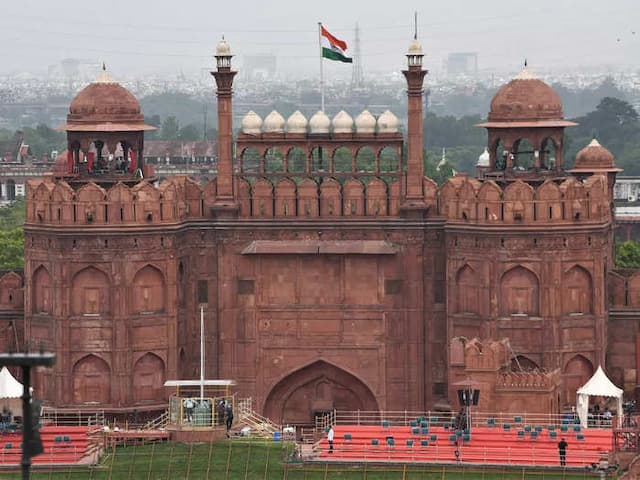Moidams: The Newest Addition to UNESCO World Heritage Sites in Assam

The mound-burial system of the Ahom dynasty in Assam, known as “Moidams,” was recently inscribed on the UNESCO World Heritage List. This historic decision was made during the 46th session of the World Heritage Committee (WHC) in New Delhi. The inclusion of Moidams marks a significant milestone as it is the first site from the North East to make it to the UNESCO World Heritage List under the Cultural Category. This recognition brings global attention to the unique 700-year-old mound burial system of the Ahom Kings at Charaideo, highlighting the rich cultural heritage of Assam and Bharat.
World Heritage Sites in Assam
Significance of Moidams
Moidams, often compared to the Egyptian pyramids and the royal graves in ancient China, are burial mounds used by the Tai-Ahom dynasty that ruled Assam from the 13th to the 19th centuries. These structures, primarily found in the Sivasagar region, were constructed to honor Ahom royalty and other prominent figures. Each Moidam contains the remains of Ahom royalty and notable individuals, demonstrating a grand royal burial landscape unique to the Tai Ahoms.
Construction and Cultural Importance
The construction of a Moidam involves creating a dome-shaped mound with a surrounding wall. The process includes placing the deceased in a specific posture, adding offerings, and covering the structure with earth. The Tai-Ahom community considers these burial mounds sacred, reflecting their unique funerary practices. The Tai-Ahom people arrived in Assam in the 13th century, establishing Charaideo as their first capital and the site of the royal necropolis. For 600 years, the Tai-Ahoms constructed Moidams using natural elements like hills, forests, and water to create a sacred geography.
Recognition and Protection
The nomination of the Moidams was endorsed by the International Council on Monuments and Sites (ICOMOS). The Moidams of Charaideo remains the only area where the largest concentration of these vaulted-mound burial chambers exist together. The property and buffer zones are jointly protected and managed by the Archaeological Survey of India and the state department of archaeology under the Ancient Monuments and Sites Remains Act of 1958 (Amended in 2010) and by the Assam Ancient Monuments and Records Act of 1959, respectively.
Celebration of Heritage
The recognition of Moidams as a UNESCO World Heritage Site was met with celebration and pride. Union Minister of Culture Gajendra Singh Shekhawat and Assam Chief Minister Himanta Biswa Sarma both expressed their gratitude and pride. Prime Minister Narendra Modi also announced this achievement, marking it as India’s 43rd UNESCO World Heritage site and the first one in Assam and the northeast region in the cultural heritage category.
Conclusion
The inscription of Moidams on the UNESCO World Heritage List not only celebrates the unique cultural heritage of the Tai-Ahom dynasty but also brings global attention to Assam’s rich history. This recognition serves as a testament to the efforts of the Assam government and the leadership under Prime Minister Narendra Modi. It also underscores the importance of preserving and promoting the cultural heritage of India for future generations.




